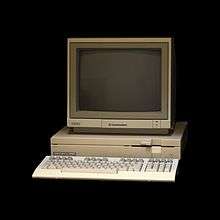Bil Herd



Bil Herd is a computer engineer who created several designs for 8-bit home computers while working for Commodore Business Machines in the early to mid-1980s. After first acting as the principal engineer on the Commodore Plus/4, C16/116, C264, and C364 machines, Herd designed the significantly more successful Commodore 128, a dual-CPU, triple-OS, compatible successor to the Commodore 64. Prior to the C128, Herd had done the initial architecture of the Commodore LCD computer, which was not released.
After leaving Commodore, Herd continued to design faster and more powerful computers with emphasis on machine vision and is a co-author on a patent involving n-dimensional pattern matching. Herd also designed an ultrasonic backup sensor for vehicles while working for Indian Valley Mfg. in 1986, a feature found on many modern vehicles today.
Herd has undertaken an entrepreneurial role and is owner of several small companies. As for recent low-level computer hacking, he did a "cameo appearance" by contributing a snippet of sprite logic code to the C64 DTV product designed by Jeri Ellsworth.
Bil Herd currently produces videos for Hackaday and appeared in and narrated the documentary "Growing the 8 Bit Generation" about the early days of home computers.
 Commodore C128
Commodore C128 Commodore 128D
Commodore 128D C128 PCB
C128 PCB Commodore Plus/4
Commodore Plus/4 Commodore Plus/4 system
Commodore Plus/4 system Commodore Plus/4 motherboard
Commodore Plus/4 motherboard Commodore 116
Commodore 116 Commodore 16
Commodore 16 Commodore 264
Commodore 264
Military and community service
Military service:
- 1977–1980: 238th Cavalry - 38th Division Indiana Army National Guard
- 1980–1982: 103rd Medical Battalion - 28th Division Pennsylvania Army National Guard
- 1981: Army Commendation Medal for meritorious service.
Voluntary health care work:
- 1989–1996: Fellowship First Aid Squad / Mount Laurel EMS Inc. Highest rank: Captain (also served as President)
- 1991–1995: Cooper Trauma Center - Camden, NJ: Trauma Technician
References
- Bagnall, Brian: On The Edge: The Spectacular Rise and Fall of Commodore, ISBN 0-9738649-0-7.
- Greenley, Larry, et al. (1986). Commodore 128 Programmer's Reference Guide. ISBN 0-553-34378-5. (Herd Co-author)
External links
- The 8 Bit Generation The story of Jack Tramiel and Commodore_International Produced by JunkFood, narrated by Bil Herd
- Hackaday.com – Bil Herd's Original Videos at Hackaday
- CNET TV coverage of Commodore64 25th anniversary with rare interview of Jack Tramiel. Includes Bil Herd, Steve Wozniak.
- Commodore 128 History at Commodore.ca – by Ian Matthews
- C128D information, with quotes by Herd – By M. A. Grundke (aka Sothius)
- A brief history of the computer demo scene – By Tamás Polgár
- The C128 story, by Bil Herd – at Fab's Commodore page (Fabian Meyer)
- C128.com Commodore Users Group Video - Updated 2005 – With Bil Herd, Dave Haynie
- Appearance on The Linux Link Tech Show on September 12, 2007 (ogg) (mp3)
- Two videos of Bil Herd at the 25th Anniversary of the Commodore 64 at the Computer History Museum in 2007
- A video of Bil Herd and Dale Luck post-show at the 25th Anniversary of the Commodore 64 at the Computer History Museum in 2007
- C128.com video of Bil Herd describing the C116 TED family of computers under Jack Tramiel
- Video of Bil Herd and Jeri Ellsworth explaining Phase Locked Loops